Trombonist Reginald Cyntje was born on the island of Dominica and raised in St. Thomas, but for the past two decades he’s been a leading light on the D.C. jazz scene. Cyntje fuses multicultural influences and social justice into his continually expanding body of spiritual and dynamic work—and he continues to earn more recognition with each passing year.
A composer, performer, and educator, Cyntje last year was featured on NPR Music’s Jazz Night in America, and was named Composer of the Year in the Washington City Paper’s “Jazzies” awards. (The year before, he received the Jazzie for Recording of the Year; in three of the past five years, he’s also been named Best Trombonist.)
Steeped in European classical music throughout grade school, Cyntje was ultimately shaped by jazz improvisation, the deep roots of his Caribbean life, and Quelbe, the Virgin Islands’ official music, which features indigenous instruments and lyrics inspired by the country’s tradition of oral history. These influences combine with Cyntje’s early experiences in social activism in St. Thomas to inspire his music.
A longtime resident of the D.C. area, Cyntje graduated from the University of the District of Columbia and earned his master’s degree at the University of Maryland. Cyntje now shares his gifts with young people as a professor at Montgomery College and the founder of the Jegna School of Music.
His 2013 sophomore album, Love, received accolades from the City Paper as “thoughtful and surpassingly gorgeous.” In 2014, Cyntje released his follow-up, Elements of Life, which explores human interconnectedness and the elements of the natural world that nurture life. His latest album, Spiritual Awakening, was a strong statement that earned a spot on CapitalBop’s best-of-2015 list.
The tireless Cyntje is now at work on his fifth album, Moods and Colors, a continuation of his signature approach exploring the universality of the human propensity toward striving, attaining happiness and self-discovery. This weekend Cyntje reunites with his band mates from Spiritual Awakening at the historic U Street venue Bohemian Caverns to debut the compositions that will be on Moods and Colors. I spoke to him recently about his art and his life, and about what we can expect from the new project.
CapitalBop: Having been born in Roseau Dominica and raised in St. Thomas, how has living in the vast beauty of the Virgin Islands influenced your music?
Reginald Cyntje: I grew up listening to American R&B and Calypso. I was exposed to many different styles of music and culture that stayed with me. You have this beautiful universal language that’s expressed in music. With improvising, I like to combine my knowledge of different music and create a unique expression of jazz.
CB: How have the Virgin Islands’ extensive types of music influenced your music?
RC: Growing up, I studied trombone. In the school systems, music education was Euro-classical. But I also learned Caribbean music. Every time we’d learn a song, the drummer would impress a Calypso beat. At the same time, each Caribbean island had some type of music like Quelbe. You have music that seems simple but the context behind music is social justice issues. As a child learning these songs, which were equivalent to nursery rhymes, there was improvisation in there. I found ways to connect my training and experience as a jazz musician with what I grew up listening to.
CB: Washington, D.C. is a unique melting pot of varied cultures, diverse music influences, and creative opportunities. How has life in the D.C. metro area also shaped your music and artistry?
RC: I visited Washington D.C. in 1993 and again in 1997. In ’97, I was 21 at the time and saw a variety of powerful Black people in different walks of life. When I heard go-go music, it piqued my interest because it reminded me of home. I heard what was in my DNA. Within go-go I heard the connection. Also, when I came to D.C. there was a strong Pan-African presence here. There are many different folks from different cultures and practices. And those people that I encountered when I moved to D.C. played a crucial role in my development as a human being. Musically, when I got here, the musicians and elders were very open. I spent a lot of time learning from them and asking questions. And being a mentor/mentee situation, they passed information on the bandstand on what to do and what not to do. D.C. was very instrumental for me in being an individual in a community that contributes to something unique and uplifts the community. My purpose is very important.
When I heard go-go music, it piqued my interest because it reminded me of home. I heard what was in my DNA.
CB: What new inspirations and challenges did you encounter rendering Moods and Colors?
RC: The challenge is the timing, but not necessarily writing the music. Two years ago, I had completed Elements of Life. I was in the middle of getting the word out and promoting. Out of nowhere comes the inspiration for the new thing. And it didn’t let me go. The message was that it was time to get it out and complete it. When the previous one was done [I went] through difficulties, from financial constraints to promotions. I was still in the middle of Spiritual Awakening. In October, I was sitting at the piano and here comes nine new tunes. The difficulty was balancing time and giving in to what the message was of what I needed to complete. I don’t sleep until it’s done.
CB: What has Moods and Colors taught you about the human spirit?
RC: I’ve learned from myself that I’m very committed to inspiring others to be their best selves. When I first sat to compose Moods and Colors, I was thinking, “I’m going to allow listeners to come up with their own meaning to each song.” But I knew there was something spiritually that I wanted to share with each song. There are very powerful colors and different shades of things I see in my home. The message is still the same; I still want the best for humanity.
CB: You focus on the spectrum of the human spirit, love, peace and social justice. Was there a pivotal moment in your life where you decided to concentrate your work on these themes?
RC: The first that I can recall was in high school. There were two public high schools in St. Thomas. Funding was poured into the older school. The newer school would get less books and finances. There were protests. Public funds were not divided equally. Many students would come to the school and involve themselves in petitioning the government for better books, and resources. When I got there in 10th grade, one of the things I’d do was try to talk to parents about how we need better instruments, better facilities, and how they can use their votes. That was my first taste of activism.
The second was tourism. It was a big thing in the Caribbean. I remember growing up and watching the tourism channel and being bothered with only visuals of Black people serving white people…. I started to find ways to speak out about that. So with those two situations, I realized what’s been going on. Those things made me dig deeper and do research.
D.C. was very instrumental for me in being an individual in a community that contributes to something unique and uplifts the community.
CB: Throughout your compositions, you fuse traditional jazz with elements of calypso, hymns, African rhythms, hard bop and reggae; how do you navigate this balance and varied concentrations of these genres in your music? ?
RC: When I sit down to compose a song, I first meditate on whatever the concept is. For the song “Blue,” I was thinking about being in the Caribbean and seeing the sky. A groove came to me, up-tempo. Seeing the ocean, this semi-Bossa Nova piece came to mind. The imagery of what that color means to me creates the groove.
CB: In other projects and performances, you’ve worked with some jazz heavy hitters, including Allyn Johnson, Brian Settles, Christie Dashiell, Herman Burney, and Amin Gumbs. For Moods and Colors, which artists have you enlisted? How does each ?band member contribute uniquely to your work?
RC: A band is like a family and you have relationships and connections—deep—with [each] individual. [Pianist] Allyn Johnson, I met him in 1997. We used to have composers’ night at Twins Jazz. We developed a certain method of communication in our 20s and 30s. So we’ve spent all this time playing together. I don’t have to explain a lot of stuff to him. We have this “see what happens” [approach] when we play together. I’m a loyal individual. With Allyn, it’s 18 years of performance together. I can write music and he’s going to bring his energy and personality to the music and he’ll add something that’s not even there.
Brian Settles is like a free spirit. I’ve known him for a long time. He has a unique way of playing sax. He is his own person and gives his own take on what he’s learned. Over the years, I’ve been going in and out of in-between structure and no structure. I like the elements of freedom in the music. Brian can play music where there is a lot of structure and also go into different tempos and no chord changes.
[Vocalist] Christie Dashiell and I met in music business class in 2009. One evening I was on U Street, hanging out in 2009 or 2010 at Café Nema, to support some friends. Christie was scatting like a horn player. She was fully aware of the harmonic structure of songs and changes. It was very fresh to hear her. Not only can she sing a song and carry a message using lyrics, she understands harmony and creates spontaneous composition. She’s listened to the elders of the music. She’s a beautiful spirit as well. It’s especially refreshing to hear a young singer to be knowledgeable of that. [Bassist] Herman Burney I met in 2003. I had a dual gig at Bossa with James King, who thought our gig was at 10 a.m., not 10 p.m. He told me that there was a new cat in town, and wanted to send him instead. A duo gig is difficult for a trombone and bass because it either sounds good or it’s terrible. You have two odd instruments. As soon as Herman came in, we started playing together. Folks were amazed at the sound that came through. We’ve performed private and public gigs including the National Gallery of Art and Sculpture Garden. We’ve created this language between us where I can almost guess what he’s going to do next musically. Because of that, playing larger ensembles adds seasoning to what already tastes good. [Drummer] Amin Gumbs and I have known each other since 7th grade. Went to same junior high and high school and started out at the same college. We’re the same age and are born on the same day, Jan. 27, 1976. When I first started playing music, he gave me my first Miles Davis recording and got me into jazz. Years later, although I was playing with tons of great drummers, I wanted to get closer to my culture and heritage. With Amin, I’ll send him the music and he’ll learn everything right away. I know many different drummers from all over the world. By us growing up together, him seeing my creative vision and us being friends for so many years, I can’t find this type of connection [elsewhere].CB: Bohemian Caverns is a historic venue in the D.C. metro area, boasting legendary performances from jazz greats over decades. How does performing at Bohemian Caverns enhance your Mood’s and Colors backdrop and delivery?
RC: One of the things I like about Bohemian Caverns is, for the last last 10 years, owner Omrao Brown has brought a level of respect, not only for the music but respect for the musicians. As a bandleader, I’m already wearing different hats. It’s nice to know that I can count on the club to do their part, get promoters to do their piece. ![]()

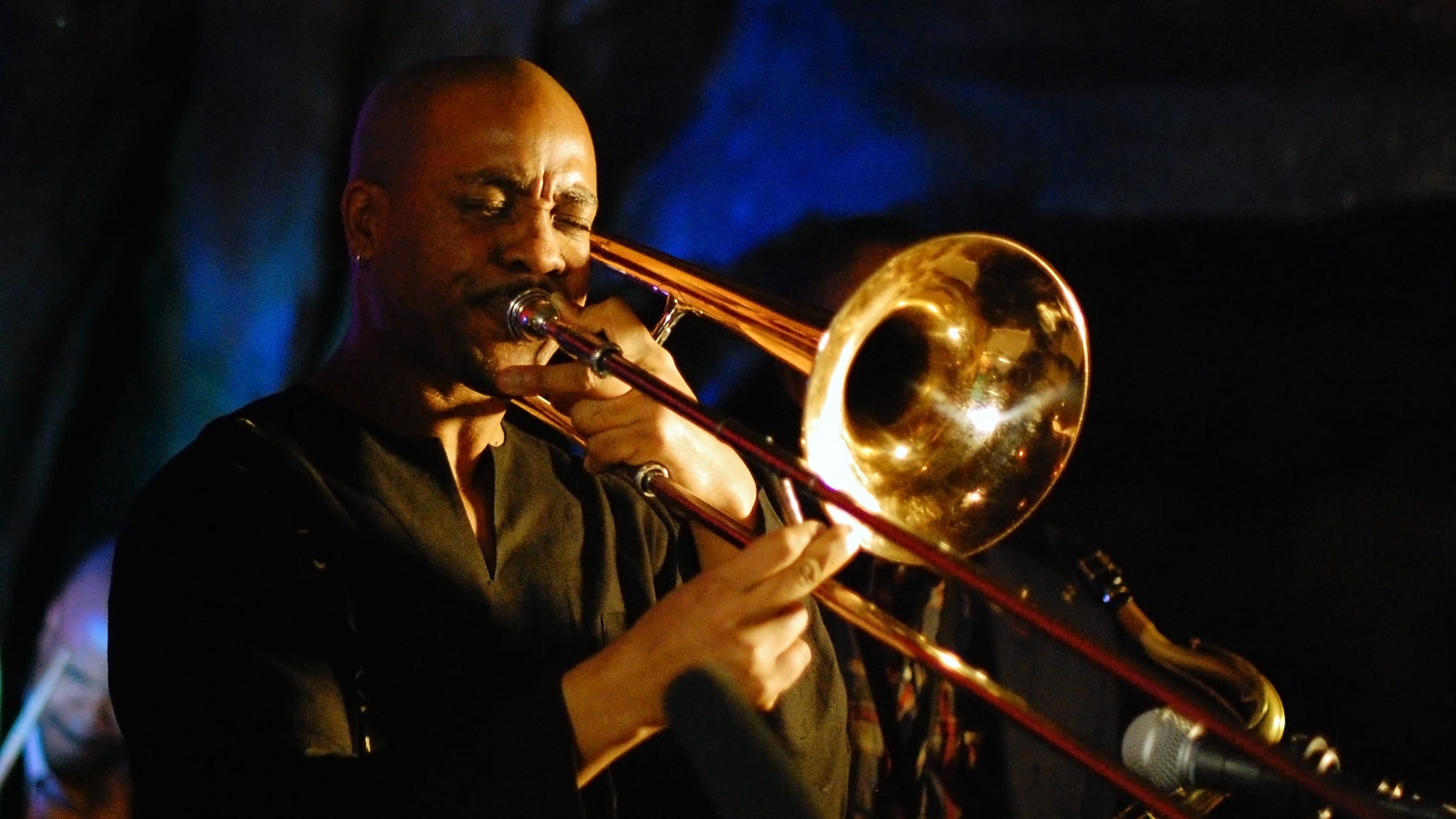
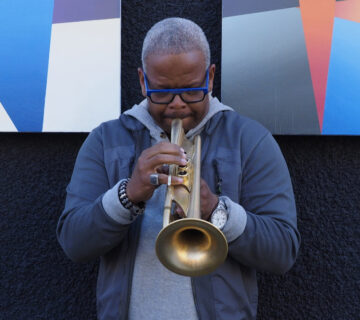
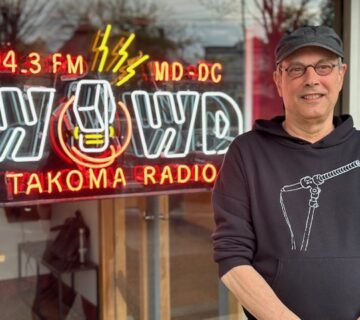
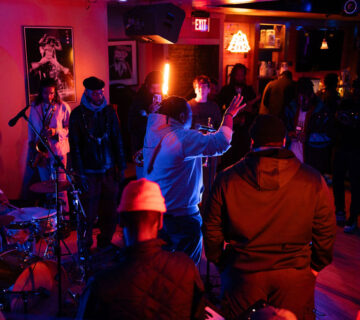
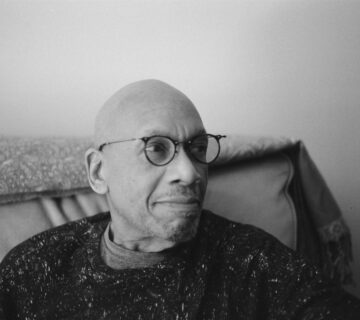
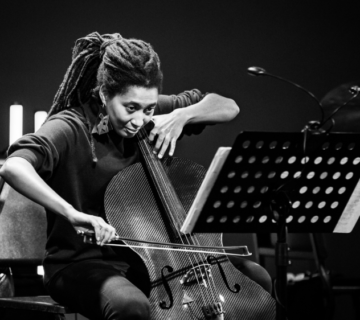
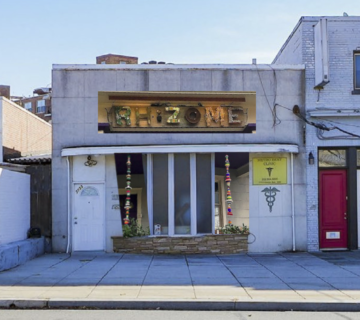
[…] using music to address social and spiritual concerns, and they just keep getting better. (Read our recent interview with the insightful activist-musician.) Last year he stole the show at the first Jazz and Freedom […]
[…] of higher learning, a “street university” for rising talent, in the words of founding member Reginald Cyntje, a trombonist. Cyntje, now known as one of D.C.’s most distinctive instrumentalists, said that […]